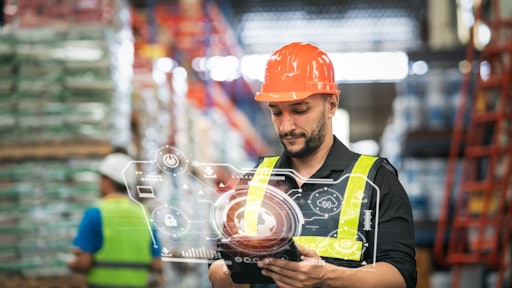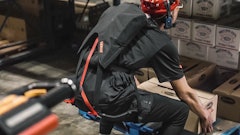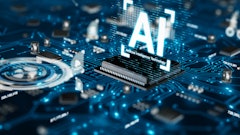
In the realm of industrial workplaces, the transformational power of technology is reshaping how companies prioritize the needs, preferences, and experiences of the most critical element in this ecosystem: the human workforce. One significant leap forward in this endeavor is the integration of artificial intelligence (AI) into wearable technology. These smart wearables are not merely tools; they are designed to enhance the well-being and productivity of workers, ensuring their safety while fostering a more efficient and comfortable work environment.
The evolution of industrial workplaces
Industrial workplaces have come a long way in terms of safety, productivity, and worker comfort. Over the decades, we've witnessed the development of sophisticated safety equipment, automation, and ergonomic designs. Yet, with the advent of AI, we are entering a new era of industrial technology—one where the focus is on augmenting human capabilities and experiences.
One of the most promising developments in this landscape is the use of AI in wearable technology. These advanced wearables are not just designed to protect workers; they are designed to understand, adapt to, and prioritize human needs.
The human-centric approach
AI-driven wearable technology represents a paradigm shift in industrial design. Instead of creating one-size-fits-all solutions, we now have the tools to tailor safety and productivity measures to individual needs and preferences.
1. Personalized safety
The game-changer here is personalization. Leveraging AI-driven wearable technology allows us to assess and respond to an individual's safety needs in real-time, rather than relying on blanket safety protocols designed for populations. This shift from population-based safety to personalized safety marks an incredibly significant advancement in industrial workplace safety.
Imagine a scenario where a worker's safety is continuously monitored through their wearable devices. AI algorithms analyze real-time data streams, examining factors such as fatigue levels, posture, and ambient conditions. Unlike traditional safety measures that are set in stone, AI can detect high-risk situations unique to an individual and trigger immediate safety alerts or recommend adjustments. For instance, if a worker's posture indicates they are at risk of straining their back, AI can send a gentle vibration to their wearable device to remind them to adjust their position. This is safety tailored precisely to the individual, at the precise moment it's needed.
Moreover, AI doesn't stop at reactive measures. It can also harness the power of big data to track trends using predictive analytics. By analyzing historical data and patterns, AI can identify potential risks even before they materialize. This predictive capability is a game-changer for industrial workplaces. It allows employers to take proactive measures, ensuring that workers remain within a safe working zone.
2. Ergonomics and comfort
The comfort and well-being of workers are vital for productivity. AI can continuously monitor a worker's physical condition and suggest ergonomic adjustments or rest periods to reduce the risk of strain or injury. This personalization improves overall comfort and ensures that workers can perform at their best.
3. Health and well-being
Beyond safety and productivity, AI-driven wearables can monitor vital signs and offer insights into an individual's health and well-being. For example, wearables can track heart rate, body temperature, or hydration levels, alerting workers to potential health issues before they become critical.
4. Training and skill enhancement
AI can also play a role in training and skill development. Wearables equipped with augmented reality (AR) technology can provide real-time guidance and feedback, helping workers learn and improve on the job. This technology ensures that training is adaptive and tailored to each worker's needs, leading to more efficient and effective skill development.
Improving workforce productivity
While safety remains paramount, improving workforce productivity is also a key goal of AI-driven wearables. Here's how these devices contribute to a more efficient industrial workplace:
1. Predictive maintenance
Wearables equipped with sensors can monitor the condition of machinery and equipment. AI algorithms analyze this data to predict maintenance needs, reducing downtime and ensuring that equipment operates at optimal levels.
2. Task optimization
AI can analyze data from wearables and other sensors to optimize task allocation and workflow. Workers can receive real-time guidance on the most efficient routes and sequences, leading to faster task completion and improved overall productivity.
3. Inventory management
In sectors like warehousing and logistics, AI-driven wearables can streamline inventory management. Workers can use AR glasses to receive real-time information about inventory levels, location, and order fulfillment, reducing errors and saving time.
Enhancing the work experience
Beyond safety and productivity, AI-driven wearables aim to enhance the overall work experience. Here's how:
1. User-friendly interfaces
Modern wearables feature user-friendly interfaces that provide workers with easy access to information and controls. Voice commands, gesture recognition, and intuitive displays make these devices more user-centric.
2. Language translation
AI-powered wearables can facilitate communication in multilingual work environments. By providing real-time translation, they break down language barriers and foster better collaboration among diverse teams.
3. Virtual collaboration
With the integration of AR and virtual reality (VR) technology, workers can collaborate with remote experts or colleagues as if they were in the same location. This not only enhances the work experience but also improves problem-solving and knowledge sharing.
The path forward
As you continue to explore the transformative potential of AI-driven wearables in industrial workplaces, it's clear that our focus is shifting toward a more human-centric approach.
These advanced technologies represent a paradigm shift, allowing us to prioritize the well-being, preferences, and experiences of each worker with pinpoint accuracy and in real-time. Gone are the days of one-size-fits-all safety protocols. Instead, AI-driven wearables usher in an era of personalized safety, where we can respond to each individual's unique needs precisely when they matter most. Beyond reactive measures, predictive analytics anticipate and address potential risks before they even emerge, ensuring that we not only react to at-risk situations but actively prevent them, ultimately creating a workplace that is safer, more responsive, and more aligned with the diverse needs of our workforce.
To fully harness the benefits of AI-driven wearables, collaboration between technology developers, industry leaders, and workers themselves is essential. By involving end-users in the design and implementation of these technologies, we can ensure that they genuinely address the unique needs of each individual.
The future of industrial workplaces is one where technology not only protects workers but also empowers them, where safety and productivity go hand in hand with comfort and satisfaction. AI-driven wearables are leading us into this future, and the possibilities are as limitless as the human potential they aim to enhance.


























